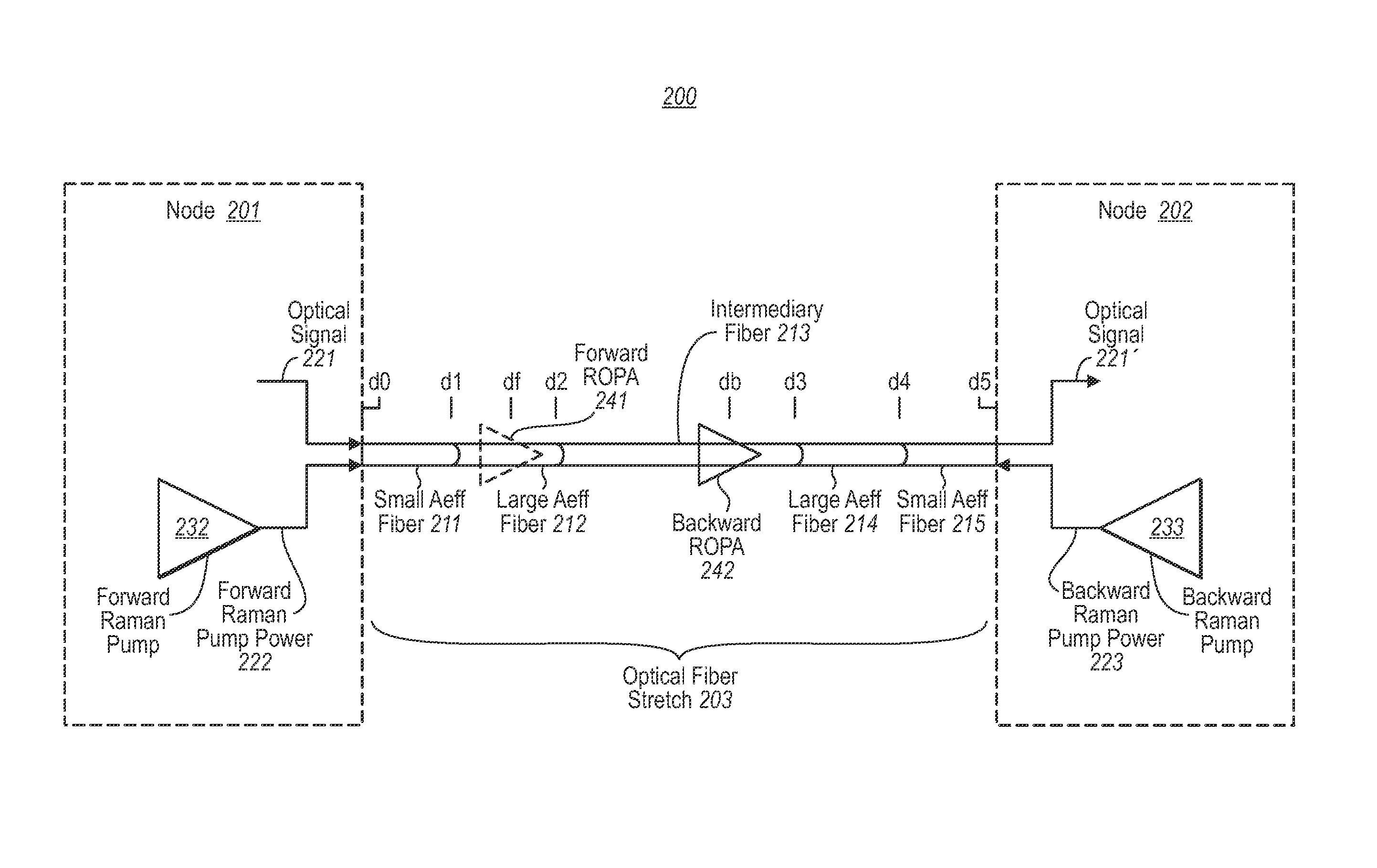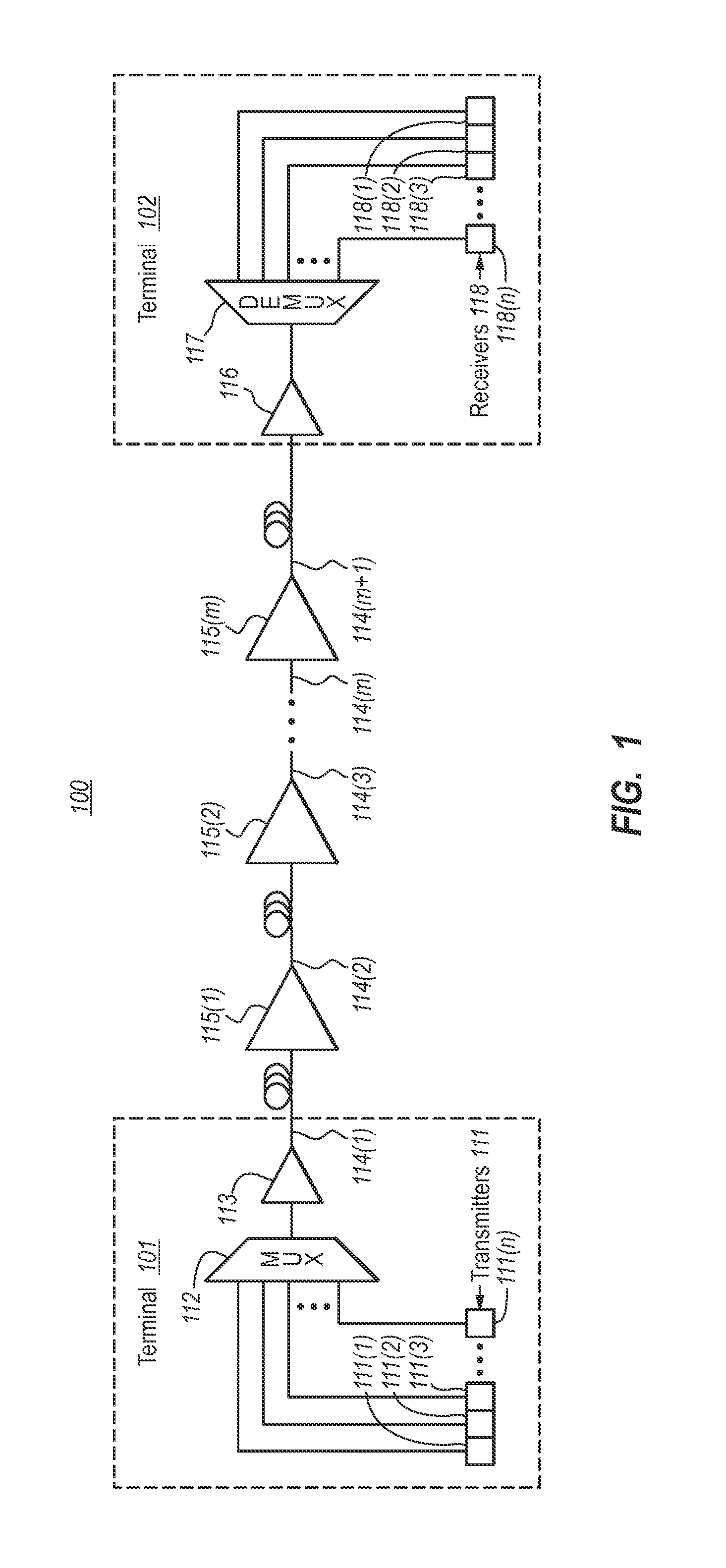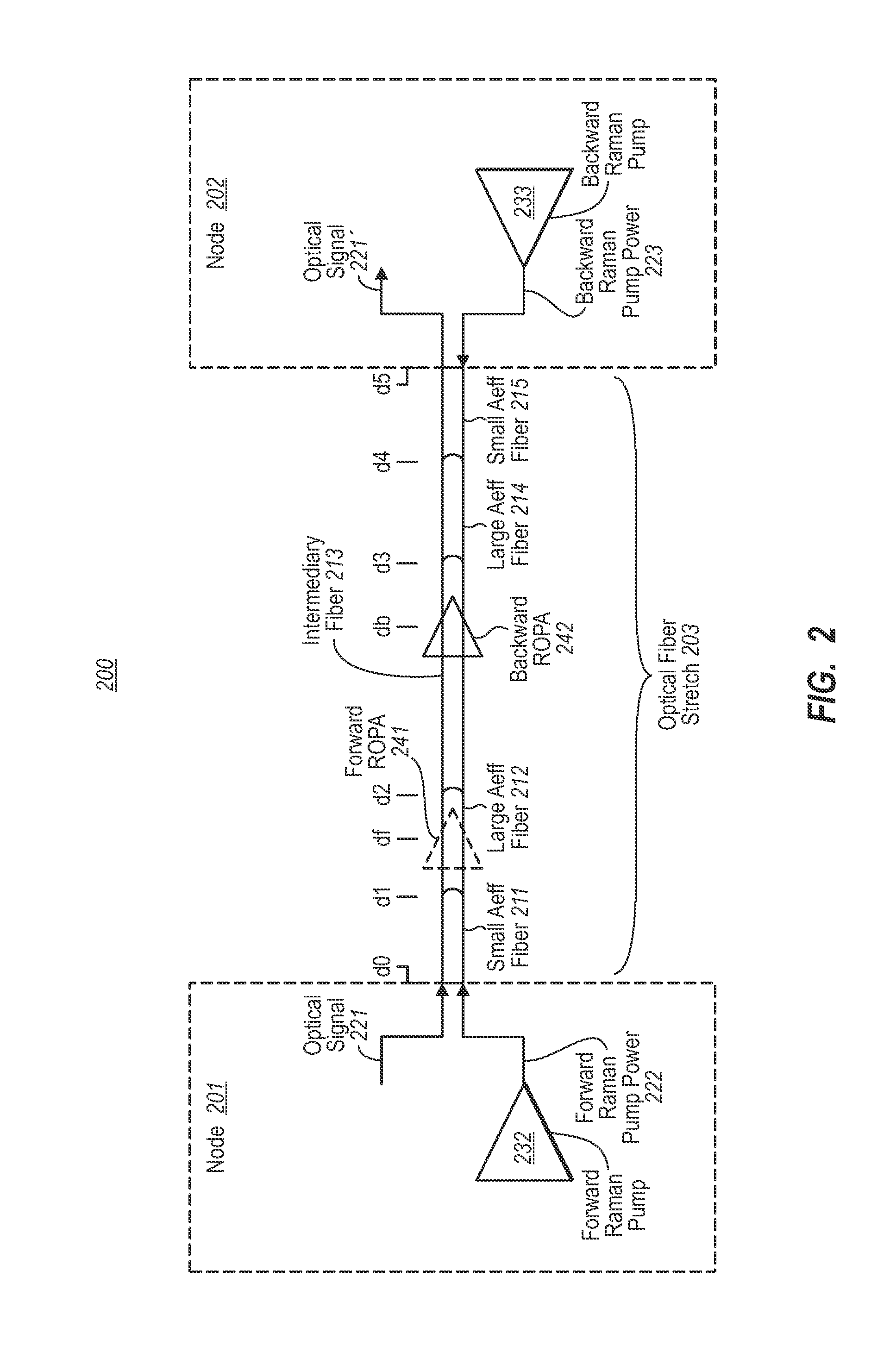Remote larger effective area optical fiber
a technology of optical fiber and effective area, applied in the direction of optical elements, electromagnetic repeaters, instruments, etc., can solve the problems of enormous technical challenges in the transmission of optic signals over such long distances, and achieve the effects of reducing optical power density
- Summary
- Abstract
- Description
- Claims
- Application Information
AI Technical Summary
Benefits of technology
Problems solved by technology
Method used
Image
Examples
Embodiment Construction
[0012]In accordance with embodiments described herein, an optical fiber stretch may experience forward Raman amplification in which the peak optical signal power occurs at some distance from the transmitter. Smaller effective area optical fiber is used at a portion of the optical fiber stretch in which the optical signal power is increasing due to forward Raman amplification, while larger effective area optical fiber is used at a more remote optical fiber portion that experiences the peak optical signal power. Thus, even though some forward Raman amplification opportunity was lost due to the larger effective area fiber, the quality of the signal is better preserved since the larger effective area fiber reduces maximum optical signal density thereby reducing non-linear degradations on signal quality that are caused by high optical signal density.
[0013]FIG. 1 schematically illustrates an example optical communications system 100 in which the principles described herein may be employed...
PUM
 Login to View More
Login to View More Abstract
Description
Claims
Application Information
 Login to View More
Login to View More - R&D
- Intellectual Property
- Life Sciences
- Materials
- Tech Scout
- Unparalleled Data Quality
- Higher Quality Content
- 60% Fewer Hallucinations
Browse by: Latest US Patents, China's latest patents, Technical Efficacy Thesaurus, Application Domain, Technology Topic, Popular Technical Reports.
© 2025 PatSnap. All rights reserved.Legal|Privacy policy|Modern Slavery Act Transparency Statement|Sitemap|About US| Contact US: help@patsnap.com



